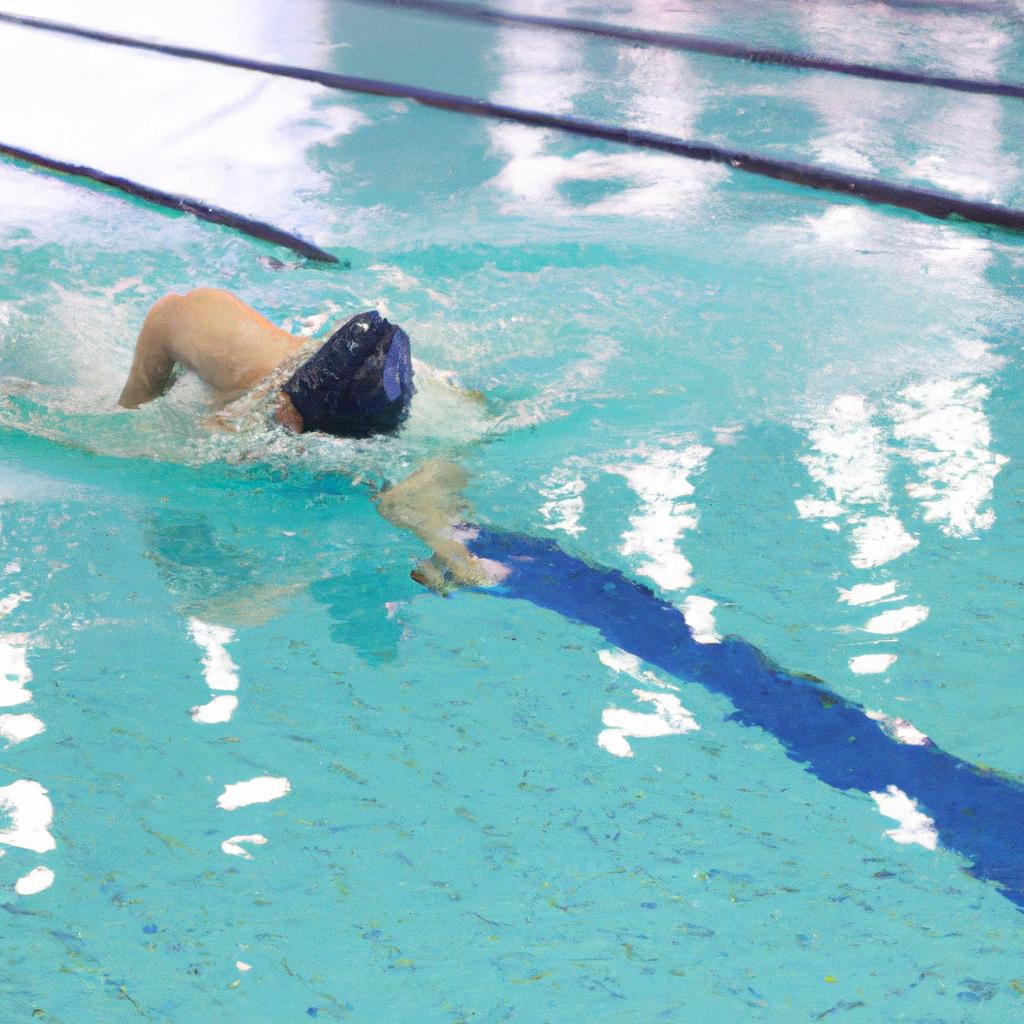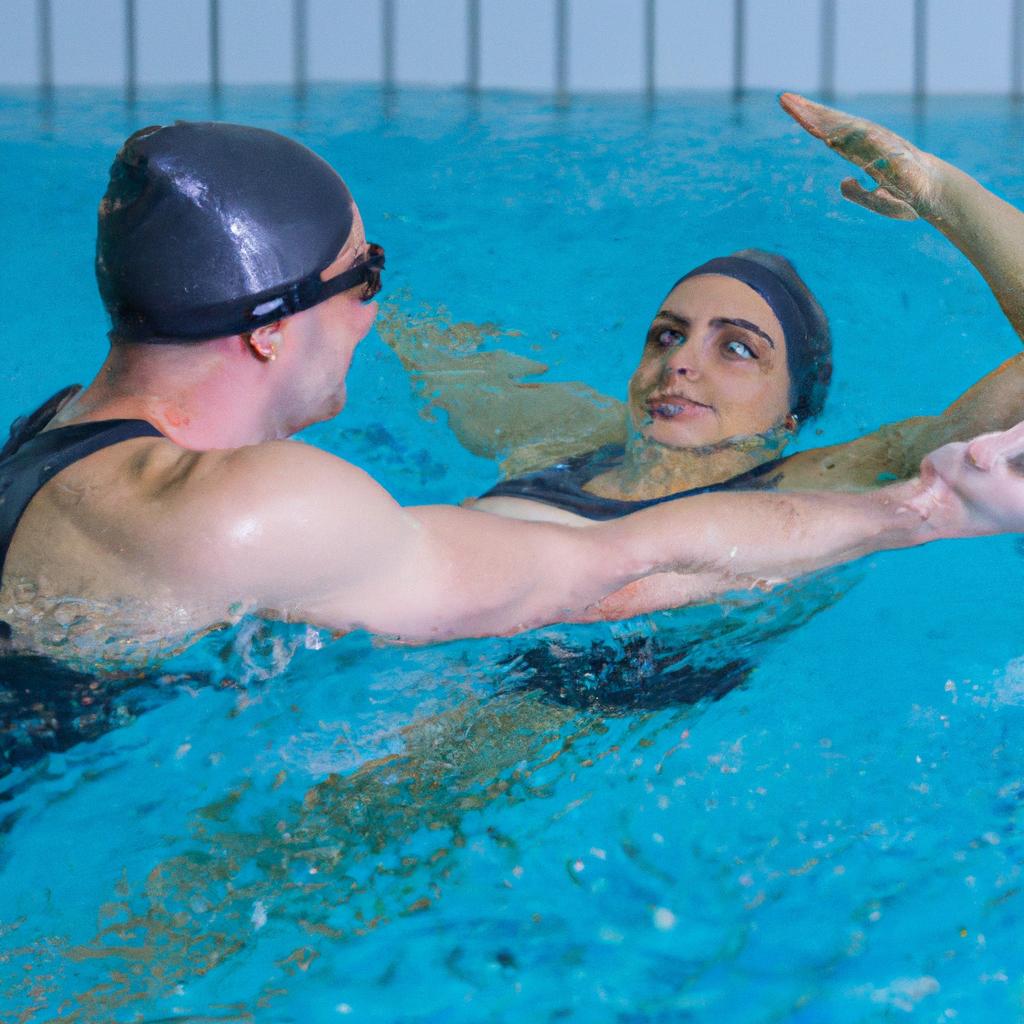
Swim Your Way to Fitness: The Joint-Friendly Full-Body Workout That Torches Calories
In a world where high-impact workouts often dominate fitness regimens, a refreshing alternative glides through the water lanes: swimming. This versatile exercise not only offers a reprieve from the stress of pounding pavement but also delivers a full-body workout that can sculpt muscles and ignite calorie burn like no other. Whether you’re a seasoned swimmer or a novice looking to dip your toes into a new fitness routine, the appeal of swimming lies in its unique ability to provide joint-friendly movement while still pushing your limits. In this article, we’ll explore the myriad benefits of incorporating swimming into your fitness routine, highlighting how this aquatic activity can help you achieve your health goals—all while enjoying the soothing embrace of water. Dive in and discover how to transform your swimming sessions into a dynamic workout that redefines your path to fitness!

Exploring the Benefits of Aquatic Exercise for Joint Health
Aquatic exercise provides an unparalleled solution for those seeking to enhance their joint health while still reaping the benefits of a vigorous workout. Exercising in water reduces the impact on your joints, thanks to the buoyancy that water offers. This makes it an ideal environment for individuals recovering from injury or those with arthritis, as it allows for improved mobility without the stress that often accompanies land-based exercise. The warm temperature of many pools can also help to soothe stiff joints and improve circulation, further enhancing comfort during workouts. Here are several advantages of aquatic exercise:
- Low Impact: Water supports your body, minimizing stress on your joints and bones.
- Full-Body Engagement: Water resistance engages multiple muscle groups simultaneously, leading to balanced strength development.
- Increased Flexibility: The fluid environment enables a greater range of motion compared to traditional exercise.
- Therapeutic Benefits: The buoyancy and warmth can alleviate pain and stiffness.
Incorporating aquatic workouts into your routine not only promotes joint health but also aids in losing weight and improving cardiovascular fitness. With the resistance water provides, you can burn calories effectively while strengthening your muscles. This creates an excellent opportunity for cross-training, enabling individuals to build endurance without overloading their joints. For those looking to track their fitness journey, consider these approximate values for calorie burn during aquatic activities:
| Activity | Calories Burned (per 30 minutes) |
|---|---|
| Water Aerobics | 200 |
| Swimming (moderate pace) | 300 |
| Water Jogging | 250 |
| Hydrotherapy | 150 |

Mastering Techniques to Maximize Caloric Burn in the Pool
To truly harness the power of swimming for caloric burn, it’s essential to adopt a few specialized techniques that elevate your workout intensity. **Interval training** is one of the most effective methods; alternating between fast-paced sprints and slower recovery strokes keeps your heart rate up and maximizes energy expenditure. Additionally, incorporating different strokes not only keeps your routine fresh but also engages various muscle groups, ensuring that you burn more calories while avoiding overuse injuries. Here are some techniques to consider:
- Using Fins: This equipment enhances propulsion, allowing you to work harder in the water with less fatigue.
- Water Aerobics: High-energy classes add resistance and diversify your workout.
- Resistance Bands: These can be used in the water to strengthen muscles while increasing caloric burn.
- Breathing Techniques: Focused breathing can improve your stroke efficiency and endurance, pushing you to swim longer at a higher intensity.
| Your Technique | Caloric Burn Increase |
|---|---|
| Interval Training | 20-30% |
| Using Fins | 15-25% |
| Water Aerobics | 10-20% |
| Resistance Bands | 15-30% |
Engaging in a structured routine with these techniques will not only amplify your caloric burn but also improve overall fitness levels. Consistency and gradual progression are key; aim to increase the duration or intensity of your workouts as you build stamina and confidence in the water. By continuously challenging your body and embracing various styles and equipment, you’ll find that the pool becomes your playground for achieving fitness goals while enjoying joint-friendly movement.

Creating an Effective Swim Workout Routine for Every Fitness Level
Whether you’re a beginner dipping your toes into the pool for the first time or an experienced swimmer looking to ramp up your routine, having a structured workout can amplify your progress and keep motivation high. Start by determining your **current fitness level**. For beginners, consider focusing on building endurance with simple techniques, such as a mix of **freestyle** and **backstroke**. A workout might consist of:
- Warm-up: 5 minutes of gentle stretching and light swimming
- Main set: 4 x 50 meters of freestyle with 30 seconds rest in between
- Cool down: 5 minutes of easy backstroke or breaststroke
For intermediate to advanced swimmers, incorporating a variety of strokes and interval training can enhance strength and speed. Aim for a workout that challenges your limits while keeping it enjoyable. A sample workout could look like this:
| Set | Distance | Time | Rest |
|---|---|---|---|
| Warm-up | 200 meters | 10 minutes | N/A |
| Interval Swim | 8 x 50 meters | 1 minute each | 15 seconds |
| Drill Set | 4 x 100 meters | 2 minutes each | 30 seconds |
| Cool Down | 200 meters | 10 minutes | N/A |
This balanced approach helps maintain muscle engagement and promotes cardiovascular fitness without straining your joints. Always listen to your body and adjust the intensity based on your recovery and feelings during workouts.
To Conclude
As we dive deeper into the world of fitness, it becomes clear that not all workouts are created equal. Swimming emerges as a powerful ally in the quest for a healthier, stronger body—a joint-friendly exercise that seamlessly combines cardiovascular conditioning with muscle toning. With each stroke, you’re not just burning calories; you’re forging a pathway to improved flexibility, endurance, and overall well-being.
Whether you’re a seasoned swimmer or a beginner dipping your toes in the water for the first time, remember that the pool is more than just a place to cool off—it’s your personal sanctuary for health and vitality. So, grab your goggles, embrace the rhythm of the water, and let the therapeutic elements of swimming guide you towards your fitness goals.
In a world often dominated by high-impact workouts, swimming stands out as a refreshing option. As you embark on this aquatic journey, may each lap remind you of the incredible resilience of the human body and the endless possibilities that lie ahead. Dive in and swim your way to a fitter you!

